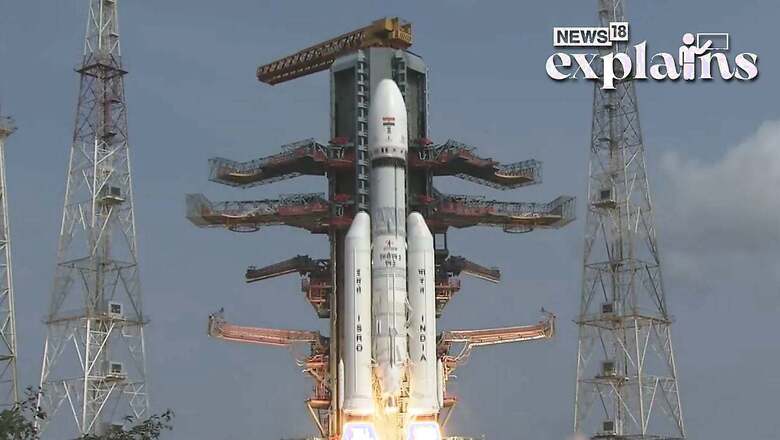
views
The Indian Space Research Organisation (ISRO) is preparing to launch its lunar exploration mission, Chandrayaan-3 today. The launch will take place at 2:35 pm from the Satish Dhawan Space Centre in Sriharikota using the LVM-3 heavy-lift launch vehicle. The mission’s objective is to achieve a safe landing and rover operation on the lunar surface, following in the footsteps of the Chandrayaan-2 mission. The anticipated soft landing on the Moon is scheduled for either August 23 or 24.
Chandrayaan-3 will carry a suite of scientific instruments aimed at studying various aspects of the Moon, including its thermo-physical properties, seismic activity, regolith (lunar soil), surface plasma environment, and elemental composition. The launch vehicle, LVM-3, is a combination of propulsion systems, a lander, and a rover. The lander is equipped to perform a gentle landing at a designated lunar site and will subsequently deploy the rover. The rover will conduct in-situ chemical analysis of the lunar surface as it moves across the terrain.
What are Launch Vehicles?
The Chandrayaan-3 mission, comprising a lander, rover, and propulsion module, relies on launch vehicles or rockets to transport it into space. Similar to other satellites, the mission’s components must be attached to these rockets for the journey. Launch vehicles are equipped with powerful propulsion systems designed to generate the immense energy necessary to overcome Earth’s gravitational pull and lift heavy payloads, such as satellites, into space.
In the case of Chandrayaan-3, the LVM3 (Launch Vehicle Mark-III) has been designated as the launch vehicle. The LVM3 features a robust propulsion system that enables it to generate the required thrust to lift the combined payload of the lander, rover, and propulsion module. By harnessing this power, the launch vehicle propels the Chandrayaan-3 mission beyond Earth’s atmosphere and towards its destination—the Moon.
About the LVM3
As per a report by the Indian Express, the LVM3 (Launch Vehicle Mark-III) is India’s heaviest rocket used for space missions. It possesses a gross lift-off weight of 640 tonnes, measures approximately 43.5 meters in length, and features a 5-meter-diameter payload fairing, which serves as protective equipment for the rocket against aerodynamic forces.
In terms of payload capacity, the LVM3 can carry up to 8 tonnes to lower Earth orbits (LEO), which are approximately 200 km from the Earth’s surface. However, when it comes to geostationary transfer orbits (GTO) located at a much greater distance, around 35,000 km from Earth, its payload capacity is reduced to about 4 tonnes.
It’s important to note that the LVM3 is not considered weak when compared to rockets employed by other countries or space organizations for similar purposes. For instance, the European Space Agency’s (ESA) Ariane 5 rocket has a lift-off mass of 780 tonnes and can carry 20 tonnes of payloads to LEO and 10 tonnes to GTO, the report explains.
The LVM3 made its inaugural space journey in 2014 and was also used for the Chandrayaan-2 mission in 2019. More recently, in March of this year, it successfully deployed 36 OneWeb satellites weighing approximately 6,000 kg into LEO, demonstrating its ability to launch multiple satellites into space. This marked the second commercial launch for the LVM3, with the first occurring in October 2022 during the OneWeb India-1 mission, the report says.
Rockets typically consist of several detachable components that provide the necessary energy for propulsion. These components burn various types of fuel to power the rocket. Once their fuel is depleted, they detach from the rocket and often burn up in the atmosphere due to air friction, resulting in their destruction. Only a small portion of the original rocket, known as the upper stage, reaches the intended destination of the satellite, such as Chandrayaan-3. After the satellite is deployed, this final part of the rocket either becomes space debris or re-enters the atmosphere and burns up.
The LVM3 is designed as a three-stage launch vehicle, consisting of two solid boosters (S200), a core liquid fuel-based stage (L110), and a cryogenic upper stage (C25). Each stage contributes to the rocket’s overall thrust and performance during different phases of the launch, the report says.













Comments
0 comment